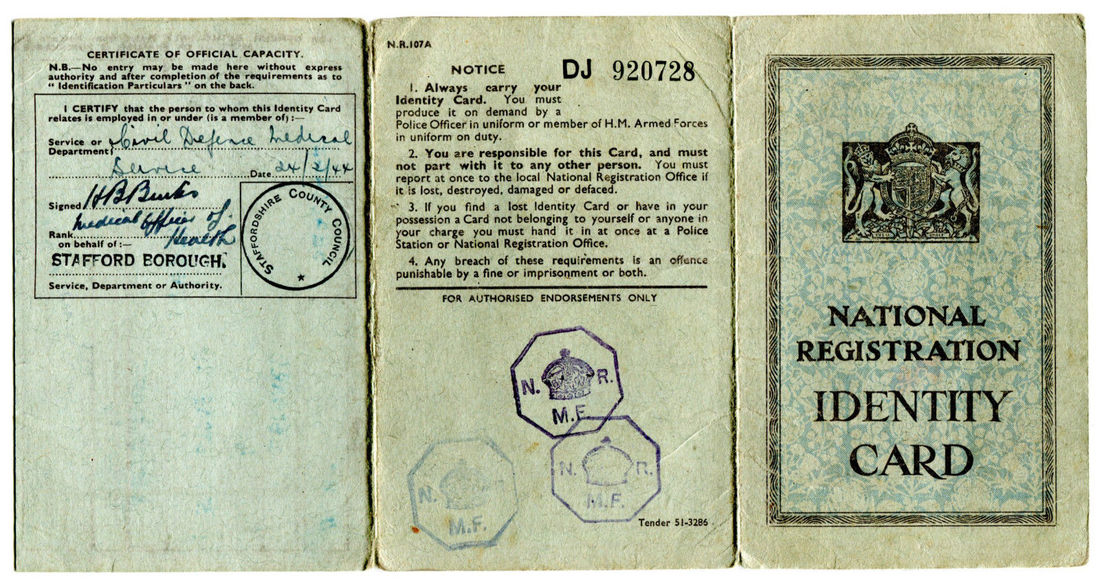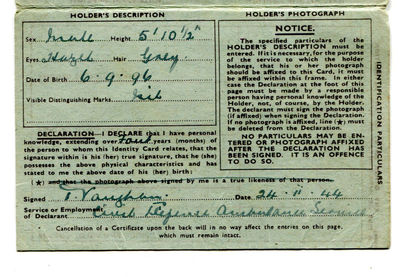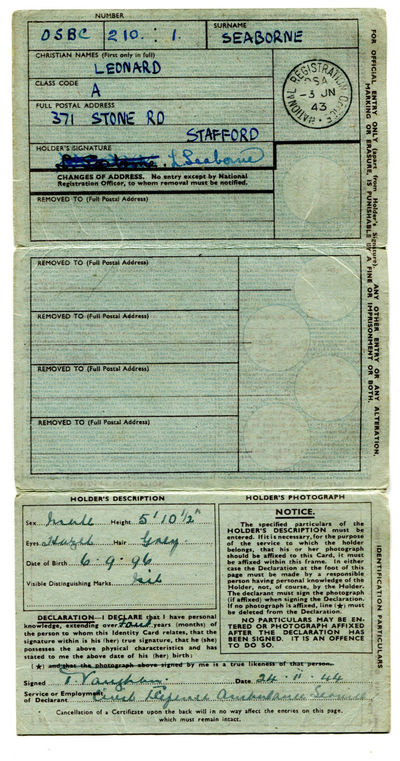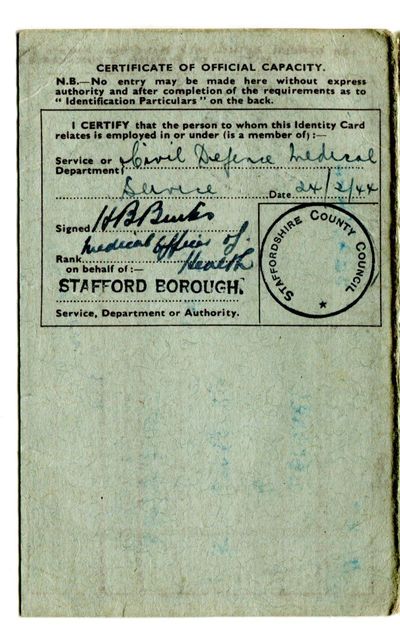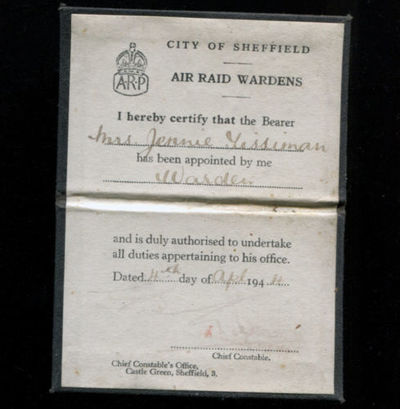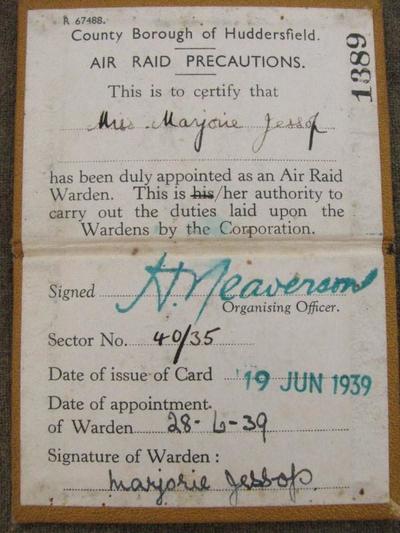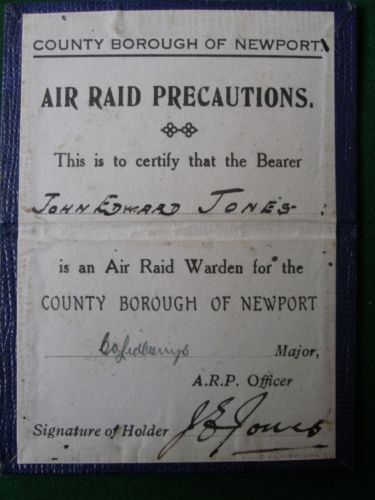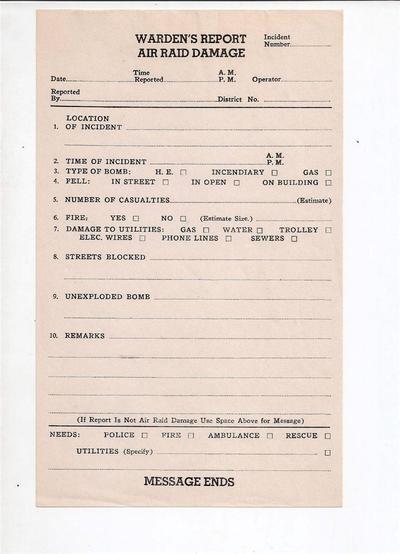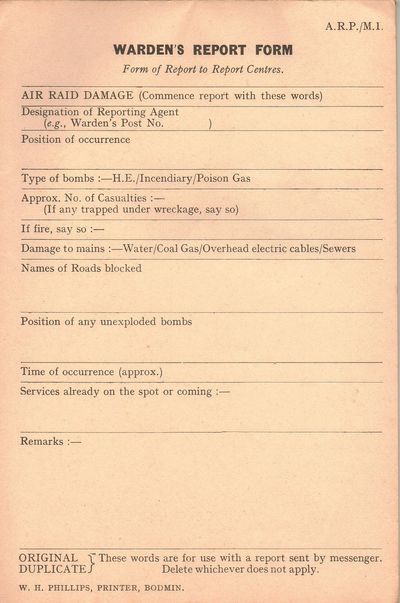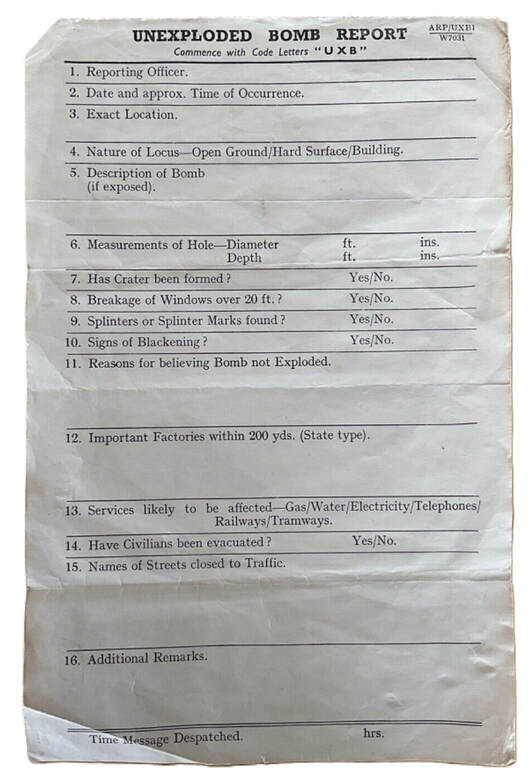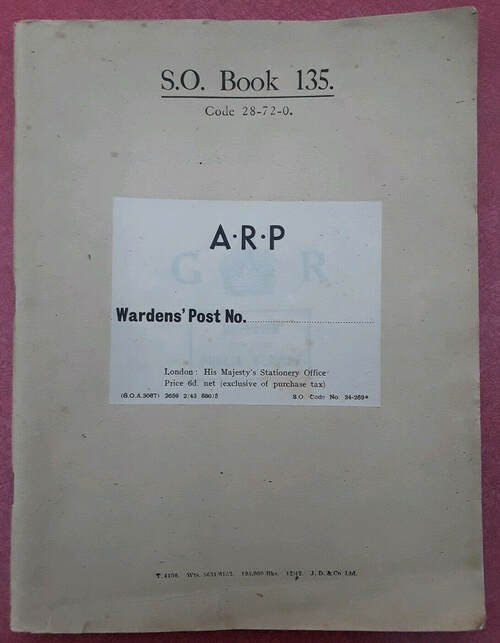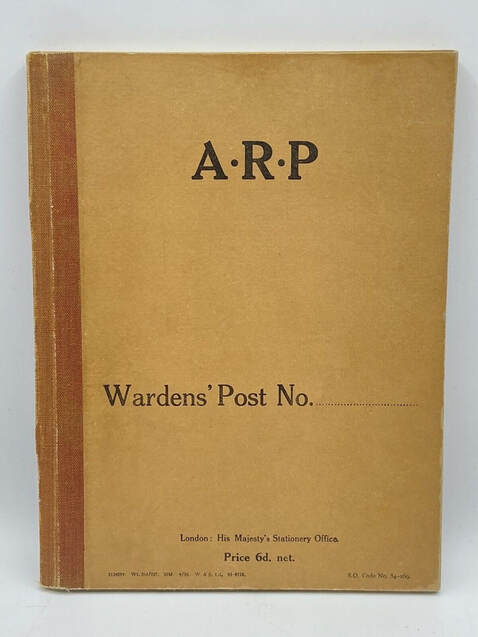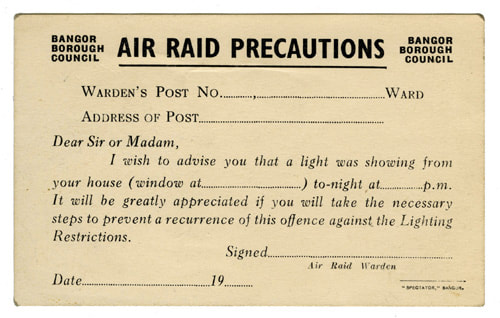Civil Defence & ARP Warden Documents & Identity Cards
National Registration Identity Card NR107A (N.R.107A)
Like every other person in the UK during the second world war, Civil Defence personnel carried a National Registration Identity Card. The first identity cards issued were in 1939 and were a buff colour. The cards were issued to everyone on National Registration Day (29 September 1939), including children.
To prevent forgery of identity cards (they were used to get a ration card) a new blue/green card was introduced between May and July 1943 for those aged 16 and over. This included more details of the bearer. For most people their ID card was a four-page folded card which detailed the address of the recipient and did not have a photo. Civil Defence personnel were issued with an endorsed ID card - a pale blue NR107A (N.R.107A) - that had extra space to detail their civil defence role and could include a photograph (rarely used though).
The buff card for children was maintained (a person would receive the blue/green card after their sixteenth birthday). The buff card with "Under Sixteen Years" was also introduced in 1943 but was for new-borns only.
To prevent forgery of identity cards (they were used to get a ration card) a new blue/green card was introduced between May and July 1943 for those aged 16 and over. This included more details of the bearer. For most people their ID card was a four-page folded card which detailed the address of the recipient and did not have a photo. Civil Defence personnel were issued with an endorsed ID card - a pale blue NR107A (N.R.107A) - that had extra space to detail their civil defence role and could include a photograph (rarely used though).
The buff card for children was maintained (a person would receive the blue/green card after their sixteenth birthday). The buff card with "Under Sixteen Years" was also introduced in 1943 but was for new-borns only.
ARP Warden Appointment / Warrant Cards
In addition to the identity card borough councils also issued civil defence prsonnel, especially air raid wardens, with appointment or warrant cards. Air raid wardens were allowed to inspect each household's air raid precautions measures and as such needed authority to enter private premised. The warrant card provided this.
ARP Warden's Report Form - A.R.P./M.1.
Following every air raid incident an ARP Warden would complete the report form and send it to the local control centre.
Unexploded Bomb Report Form ARP/UXB1
For the reporting of a unexploded bombs, a specific form - ARP/UXB1 - was made available.
Air Raid Wardens' Post Diary
All Wardens' Posts kept a diary of the events in their sector/area. Noted down would be the times of all the various alerts, sounding of sirens, the type of alert (from yellow to red) as well as noting any bombs or incendiaries that landed within their sector. Most posts were issued with a stationery office book like the one below.
ARP Warden Notice of Light Showing Card
During the blackout, wardens were to patrol the area around their post and ensure that no light was showing. The term "Put that light out!" has an almost comical ring to it now. If a warden could not get an answer to a light being shown they would put a notice through the door to the householder or building/factory/shop owner.
